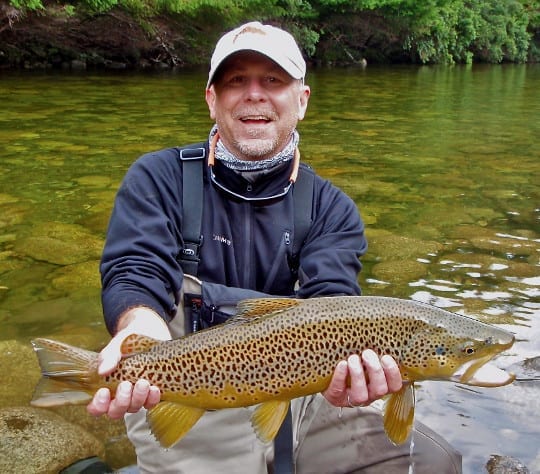Our Executive Director’s Update
The summer edition of the printed Stream Keeper’s Log newsletter should be hitting mailboxes any day now. In the interest of keeping our online readers up to date, here’s the Executive Director’s Update from CalTrout Executive Director Jeff Thompson:
An Executive Director’s Update

CalTrout Executive Director Jeff Thompson
Given the demands on California’s cold, clean water, we all learned long ago to appreciate a good “water year.” This year was one of the most abundant precipitation years in recent history and snowpack approached record levels. Rivers were still running significantly higher than normal in early summer.
No complaining, but I felt fortunate that a mid-July trip to Mt. Shasta and Burney coincided with reasonable flows.
I floated the Upper McCloud and saw firsthand 600 cfs of cold spring water bursting from the streamside terrain. It’s an impressive sight that reinforces the criticality of CalTrout’s job in protecting the aquifer which feeds the Upper Sac, Shasta River and the McCloud. CalTrout will soon be publishing a springs water study stemming from our Mt. Shasta area work.
I also fished the Lower McCloud. There is no better way to understand the importance of protecting the McCloud, given the current FERC relicensing work, than to fish it. I would encourage you to visit our website to see a video explanation of our McCloud flow recommendation.
A Day On The Pit
I was most intrigued by a day on the Pit. I was anxious to fish it because new flows, decided upon in 2003 as part of a FERC relicensing project, have just been implemented. Pit 3 flows have increased from 150 to 300 cfs, well above the 200 recommended by CalTrout and TU. It fished very well, but it is a different river. More volume is creating a wider river and limits your ability (or at least mine) to get across it. Part of our job going forward is to work with PG&E, DFG, local guides and anglers to assess the biological and recreational impacts, and to recommend changes to the new plans, if need be. That process is already underway.
Our Northern Spring Creeks
Hat Creek was next, and I saw the extensive loss in aquatic vegetation. Restoring Hat Creek is a high priority for us over the next few years. We are actively developing a comprehensive restoration plan with DFG, PG&E and other stakeholders.
Last stop was Fall River to see the spread of invasive Eurasian water milfoil and its impact on the native aquatic vegetation. Today, CalTrout is actively partnering with the Fall River Conservancy and UC Davis to better understand the impact of this infestation and evaluate opportunities to control it.
Nothing like visiting projects in person to underscore the importance of our work.
Our New Fiscal Plan
The week following my trip, the CalTrout Board of Governors approved our new fiscal year plan. The organization is growing and arguably never healthier. Our goal is to do more impactful work relative to our mission, to protect and restore wild trout, steelhead, salmon and their waters throughout California. I would encourage you to visit our website and follow us on Facebook to stay up to date on our work.
Thanks very much for your continued support.
Tight lines,

Jeff Thompson
Executive Director, CalTrout




